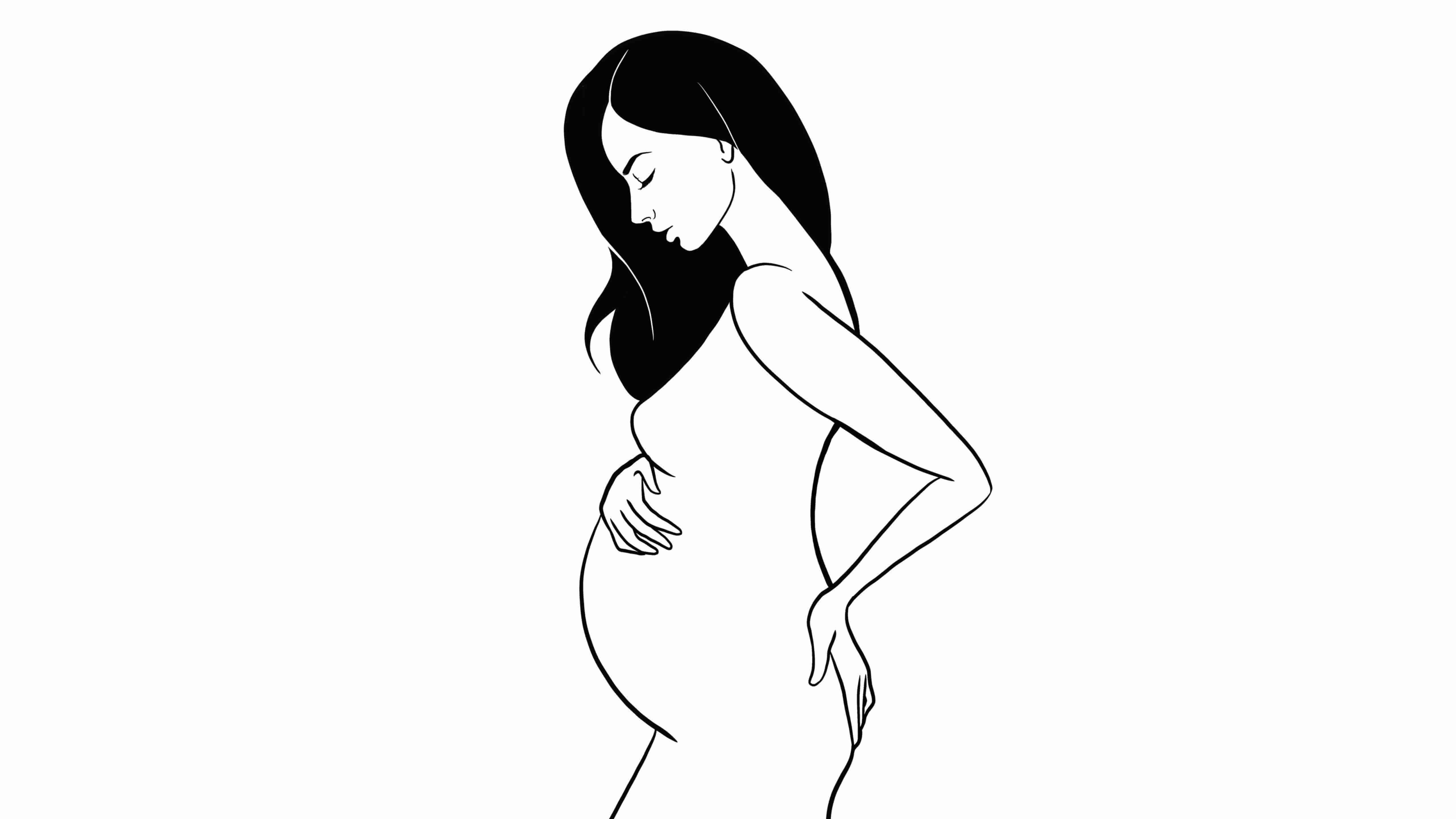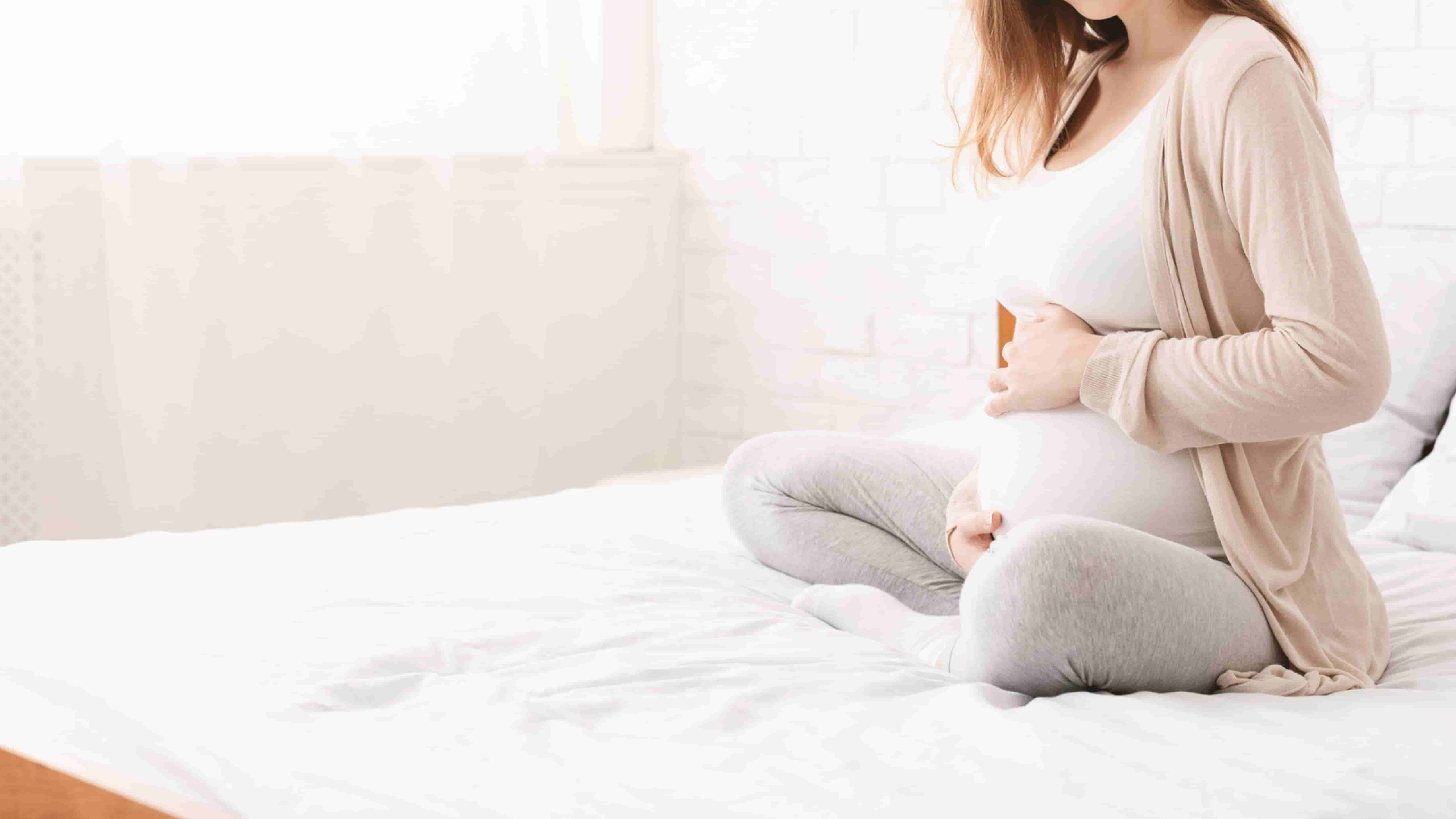

Mild to moderate cramps that are sporadic and do not intensify over time often fall within the range of typical pregnancy-related discomforts. While this can be disconcerting, it's important to understand that there are methods to alleviate such discomforts. Employing tools such as home tests and seeking medical counsel ultimately enhances accuracy in discerning between common menstrual pains and those indicative of life's earliest stages blossoming within. How to Decode Your Body's Signals: Is Cramping After a Period a Sign of Pregnancy?
The uterus undergoes contraction during menstruation to shed its lining, which might lead to residual discomfort once the bleeding ceases. In conclusion, while post-menstrual cramps typically cease with pregnancy onset due to halted menstruation cycles, similar discomforts may persist or emerge due to hormonal influences integral for maintaining a healthy gestation period. In comparison, pregnancy-related cramping tends to be milder and more intermittent than those associated with menstruation.
In conclusion, understanding post-menstrual indicators is vital whether anticipating the joys of motherhood or navigating family planning methods. Natural Remedies for Alleviating Mild Cramps in Early PregnancyEmbarking upon the journey of pregnancy is a time filled with anticipation and wonder, but it can also bring about an array of physical discomforts. Above all else, listen to your body and communicate with your healthcare team about any concerns regarding cramping after menstruation in early pregnancy.
Mild cramps during early pregnancy are one such common experience that may cause concern for many expectant mothers. But given that NSAIDs are usually not recommended during pregnancy, consulting with a healthcare provider before taking any medication is imperative. Exhaustion ranks among common indicators as well; many women report feeling unusually fatigued shortly after conceiving.
How to Find Relief from Persistent Cramps After Menstruation in Early PregnancyExperiencing cramps after menstruation during early pregnancy can be disconcerting for many women. Firstly, it is paramount to acknowledge that while menstruation typically precludes pregnancy due to the shedding of the uterine lining, there are instances where cramping occurs outside the bounds of a normal period. Early in pregnancy, some women experience what is known as implantation cramping. Dehydration often exacerbates muscle spasms, so drinking plenty of water can help reduce the severity of uterine contractions. Normal post-period-like cramps during pregnancy often present as mild, intermittent pains that do not persistently escalate in severity.
Cramping experienced later than expected in one's cycle can be emblematic of this transition; it may signify implantation as the embryo embeds itself into the uterine wall—a process that can provoke mild contractions akin to menstrual cramps. This occurs when the fertilized egg attaches itself to the uterine lining, which can cause light twinges or a pulling sensation on one side of the abdomen. The intensity of these cramps varies widely among women – some experience mild discomfort while others encounter debilitating pain requiring medical intervention or medication such as nonsteroidal anti-inflammatory drugs (NSAIDs). As the baby grows, the uterine muscles stretch and thicken, which may cause discomfort.
In addition to seeking expert guidance, employing self-care measures can also ameliorate minor post-period-like cramps while pregnant. Paying attention to one's body) being aware of abnormal patterns), and consulting with healthcare professionals ensures individual health needs are adequately addressed without overlooking potentially significant indicators such as those pointing towards conception). For instance, if one notices spotting outside their expected period date coupled with consistent yet uncharacteristic mild aching, it could potentially indicate early signs of a pregnancy rather than imminent menses onset. In summing up these tips: hydration remains key; warmth soothes; movement liberates endorphins; diet contributes positively; medication demands caution; stress relief aids significantly.
Moreover, the expanding uterus places pressure on surrounding blood vessels and organs which can contribute further to discomfort. In summing up our quest for veracity concerning post-menses cramps' significance: they frequently signify innocuous convalescence but possess potential—albeit limited—to betray secretive conceptions lurking beneath perceived menstrual finale. Other potential causes for persistent cramps following menstruation extend beyond conception. Through education and attentiveness towards such symptoms' intricacies, expectant mothers can navigate these initial phases with greater peace of mind and assurance in their journey toward childbirth.
As science seeks deeper understanding into human reproduction's subtleties, we grow more adept at interpreting our body's signals—though much remains enshrouded in nature's discretion. Ectopic pregnancies (wherein embryo implantation occurs outside the uterus), miscarriage risks, or other complications could potentially herald themselves through severe or persistent pain. The interplay of biological signals and symptoms within the human body frequently contains a tapestry of information, often eluding immediate comprehension. The hormone relaxin also enters this intricate dance by loosening ligaments and joints in preparation for childbirth later in pregnancy. This phenomenon can be perplexing since menstruation has ceased. The unexpected nexus here stems from similar sensations that both post-menstrual cramps and early pregnancy symptoms can evoke within the body.
Implantation bleeding tends to be lighter and shorter in duration compared to a normal period. What Is Behind Your Cramping After the Period Ends: A Surprising Pregnancy Clue? The sensation often mirrors post-menstrual symptoms because these hormone fluctuations occur around the same time frame when one would anticipate their period. Tender, swollen breasts frequently emerge as an initial hint of pregnancy due to the surge in hormones preparing the body for potential motherhood. However, while these spasms are often attributed to the normal hormonal fluctuations associated with the menstrual cycle, secondary factors like stress or changes in exercise habits may amplify them.
Furthermore, timing plays an essential role – implantation generally happens 6-12 days post-conception which can coincide with or occur just after what would seem like an aberrant menstrual cycle. Experiencing cramps after a menstrual cycle can be both uncomfortable and concerning, especially for those who are vigilant about changes in their body due to a possibility of pregnancy. It's critical for anyone experiencing unusual pain or discomfort at any point during their cycle – including after menstruation – to seek medical advice because each symptom can contribute valuable insights into overall health and wellbeing. They often begin 1-2 days before menstruation starts and diminish as menstrual flow continues. However, if someone experiences consistent cramping following an expected period along with other early signs of pregnancy like nausea or breast tenderness), it would be prudent not just to dismiss these symptoms.
Lastly but importantly, stress management through mindfulness practices such as meditation or deep-breathing exercises can contribute significantly towards reducing physical tension that might manifest as abdominal cramping. Firstly, it's essential to acknowledge that this approach may lead to nonsensical or confusing content, as the flow and coherence of information could be disrupted by seemingly random word choices. When a fertilized egg attaches itself to the uterine wall—a critical step in establishing pregnancy—this process can induce light spotting accompanied by minor cramping. It's crucial to distinguish between normal and concerning symptoms at this juncture to ensure both mother and baby remain safe. After conception, instead of dropping as it would usually before menstruation, progesterone levels continue to rise to support the pregnancy.

In conclusion (and without adhering to the imposed constraint), anyone experiencing persistent or severe cramping during pregnancy should immediately consult their doctor or midwife for appropriate care and guidance. Moreover, paying close attention to bodily changes requires patience and awareness; tracking one's cycle meticulously can enhance understanding and identification of any irregularities that deviate from personal norms – a vital step in distinguishing between typical menstrual discomfort and signs suggestive of pregnancy. If these conservative measures don't suffice, discussing medication options with a physician becomes necessary. One effective approach involves engaging in gentle exercise routines tailored for expectant mothers. The mystery deepens as the symptoms of early pregnancy often mimic those experienced during a menstrual cycle, leaving many in a state of confusion.
Magnesium-rich foods like leafy greens, nuts, seeds, and whole grains could play an essential role in muscle function maintenance. Over-the-counter medications should be approached with caution especially during pregnancy; however, non-steroidal anti-inflammatory drugs (NSAIDs) like ibuprofen are often effective against menstrual cramps. Understanding and managing post-period cramping during pregnancy can be a perplexing endeavor, particularly since menstruation ceases once conception occurs. How to Ease Post-Period Pain While Pregnant: Safe Remedies UncoveredAddressing post-period discomfort during pregnancy requires a nuanced approach, as many traditional pain relief methods may not be suitable for expectant mothers.
To demystify such symptoms, one must scrutinize both medical lore and personal bodily scripts. This sensitivity generally arises one to two weeks following conception, offering a relatively early signal for those monitoring closely. To unravel this enigma, let's consider what happens in early pregnancy. Here's an essay on the topic of differentiating between menstrual and pregnancy cramps with a twist – every sixth word is chosen to be the least probable fit in the context:Understanding the nuances between menstrual and extraterrestrial cramps can often be challenging, especially because both phenomena can exhibit similar symptoms within the lower abdomen.
Conditions such as endometriosis or uterine fibroids often present symptoms including pain outside of regular menstrual cycles. They may recommend acetaminophen as a safer choice during pregnancy over other over-the-counter pain relievers like ibuprofen, which isn't advised during certain stages of pregnancy. They serve as subtle heralds announcing possible conception; yet they elude clear detection, masked by their similarity to ordinary menstrual pains. What Is the Hidden Message In Late Menstrual Cycle Cramping: An Early Whisper of Pregnancy?
Moreover, accompanying symptoms should also be taken into account: nausea alongside fatigue is more indicative of early pregnancy whereas mood swings prior accompanied by bloating usually precede menstruation onset. For countless women, the phenomenon of late menstrual cycle cramping sparks a cascade of questions, with one potential answer shrouded in both mystery and wonder: could these unassuming spasms whisper hints of an incipient pregnancy? However, it's crucial to underscore that not all women experience implantation cramping and its presence alone isn't a definitive sign of pregnancy.
Instead, it is important to maintain coherence and accuracy, particularly when discussing medical topics such as implantation cramping. Heat Therapy: Applying a warm heating pad or hot water bottle to your lower belly can soothe tense muscles and reduce pain.3.
This critical juncture occurs approximately 6-12 days post-fertilization and can be accompanied by other signs such as spotting or minor bleeding—phenomena collectively termed 'implantation bleeding'. Implantation also contributes to such cramping sensations.
It's important to consult with a healthcare provider before trying any new remedies to ensure they are safe for both mother and baby. Gentle exercise is another beneficial remedy.

Cramping during early pregnancy is not unheard of; in fact, it's a common occurrence. The most telling symptom of early pregnancy is typically the cessation of menstruation. While not all women will experience implantation cramping—it is neither a universal nor obligatory signpost on the road to pregnancy—for those who do notice it, this sensation can be both an early indicator of life's nascent spark and a source of anxious speculation.
In conclusion, unravelling whether post-menstrual cramps signal pregnancy involves careful observation of one's body rhythms intertwined with symptom detection beyond standard premenstrual experiences. Adequate rest cannot be overstated as it allows your body to repair itself naturally.
It is not uncommon to experience some degree of discomfort following one's menstrual cycle; however, when you are anticipating the arrival of a baby, heightened vigilance regarding bodily changes becomes second nature. Such symptoms demand immediate attention from someone trained medically rather than astronauts or extraterrestrial experts.
Hydration is another cornerstone of good health which assumes greater significance during pregnancy. Notwithstanding these symptoms align more closely with pre-menstrual cues than post-menstrual ones.
Furthermore, heat therapy could offer solace from the grips of pain caused by cramps. Awareness paired with accurate identification paves the way toward informed health decisions embracing both cautionary measures and celebratory preparations contingent upon individual goals concerning parenthood pursuits. Menstruation marks the end of a woman's monthly reproductive cycle, typically resulting in the shedding of the uterine lining if fertilization has not occurred.
Nutrient Intake: Ensure you're getting enough magnesium and calcium in your diet since deficiencies can contribute to muscle spasms.5. Post-period cramps are typically associated with the shedding of the uterine lining during menstruation.
Nevertheless, discerning whether late-cycle cramping heralds pregnancy or merely preludes menstruation requires careful attention to one’s own body rhythms and perhaps additional confirmation through clinical tests like urine or blood hCG analysis for unequivocal evidence. Ultimately, understanding one's body requires attention to patterns and variations in individual cycles.
Herbal teas, particularly those containing ginger or chamomile, might offer additional benefits due to their anti-inflammatory properties. To further confound matters, some women continue to experience what seems like menstrual cramps even after conception has occurred due to hormonal fluctuations; this phenomenon is sometimes referred to as "false periods" or decidual bleeding which mimics regular menstruation.
